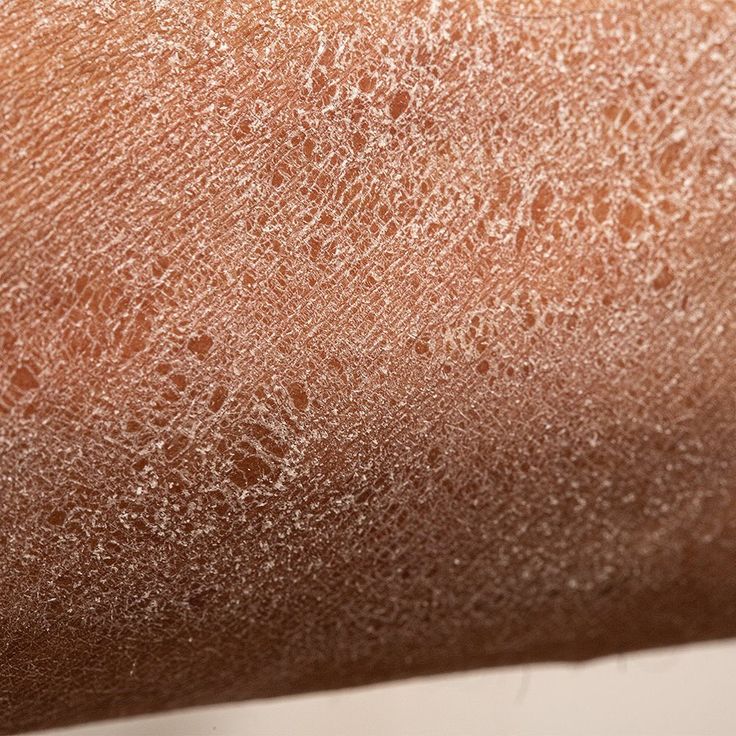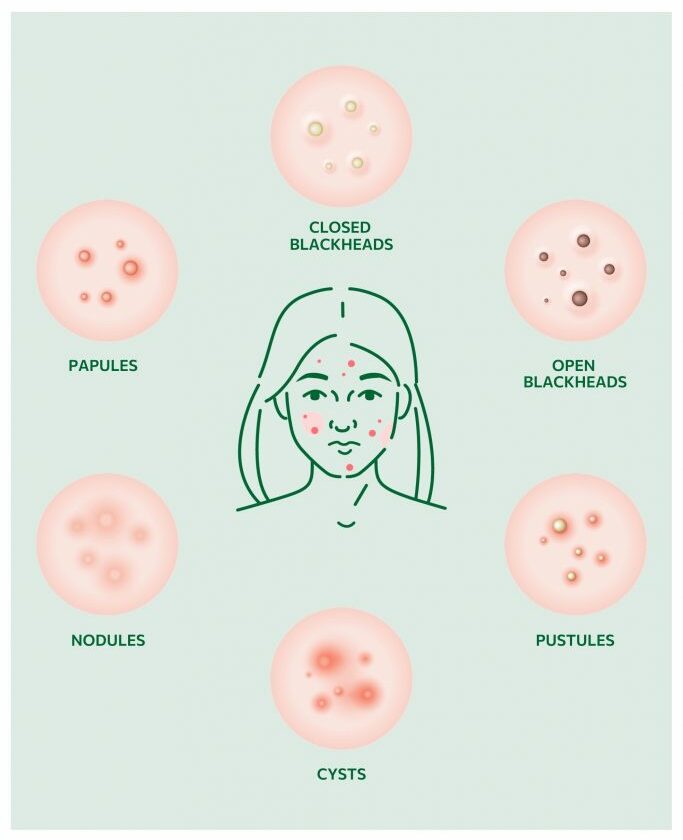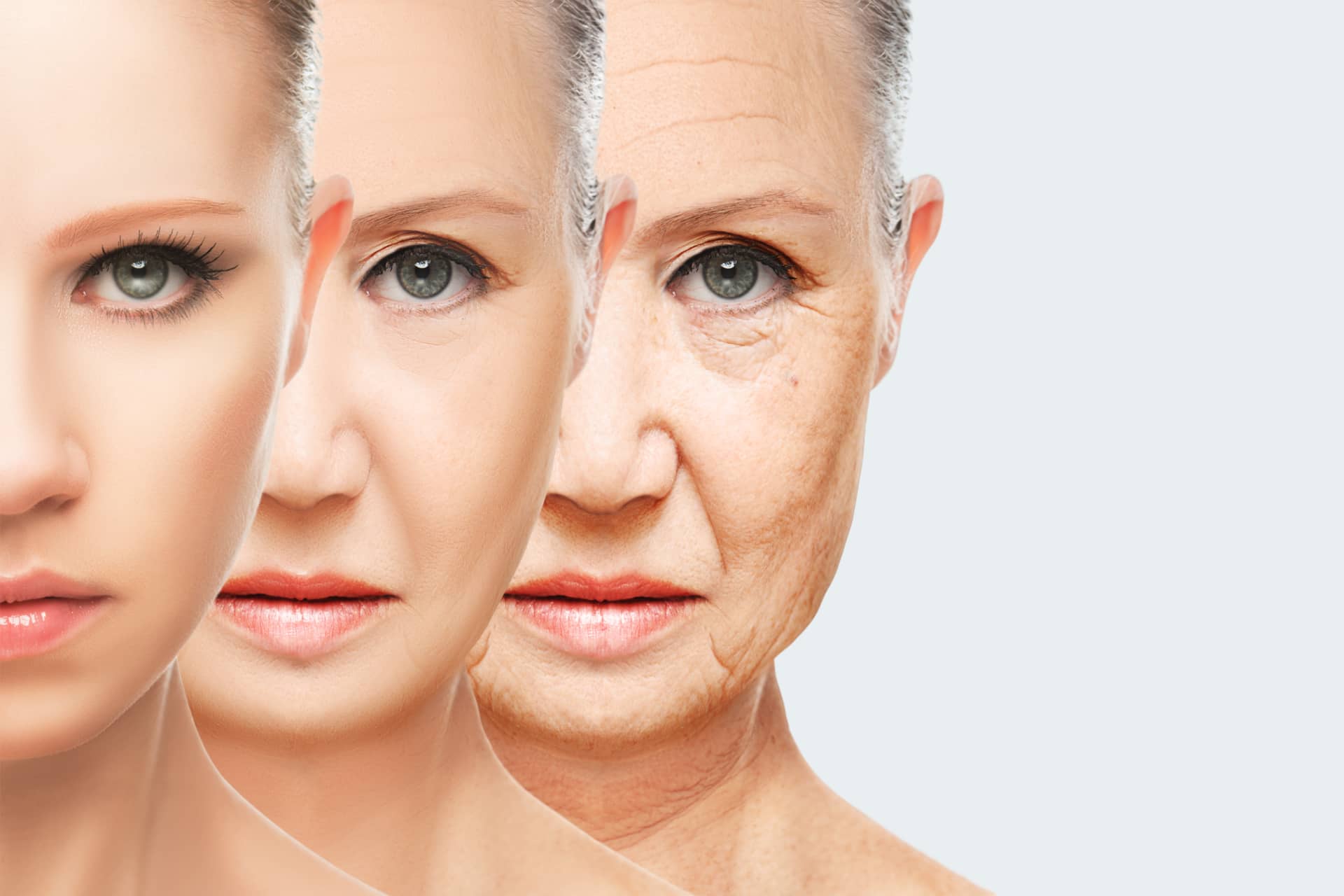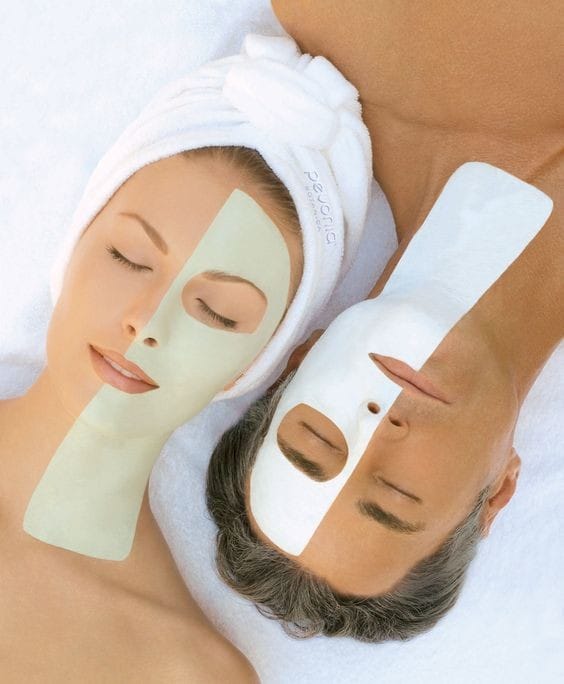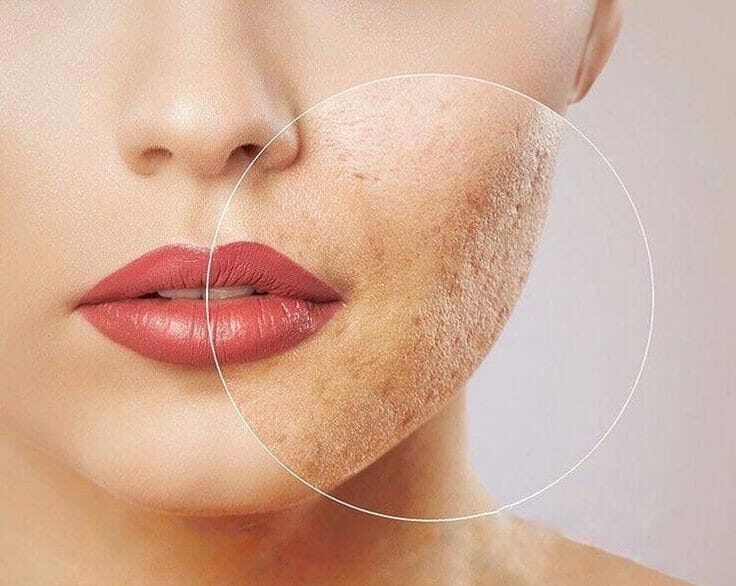Dry skin, medically known as xeroderma, occurs when your skin lacks sufficient moisture, leading to a rough texture. It’s a common condition that can often be managed at home with the use of moisturizers.
Dry skin typically feels like rough patches that may flake or appear scaly. It can sometimes be accompanied by itching (pruritus), though this isn’t always the case. In more severe instances, dry skin can crack and even bleed.
- What are the types of dry skin?
- Who does dry skin affect?
- What are the symptoms of dry skin?
- How do I know if I have dry skin?
- Where on my body will I have dry skin?
- How does dry skin affect my body?
- What causes dry skin?
- How is dry skin diagnosed?
- How is dry skin treated?
- What type of lotion or moisturizer is best for dry skin?
- What should I eat or drink with dry skin?
- How do I manage symptoms of dry skin?
- How can I prevent dry skin?
- When should I see my healthcare provider?
What are the types of dry skin?
Types of dry skin include:
- Contact dermatitis: Contact dermatitis occurs when something comes into contact with your skin that causes an irritant or allergic reaction. Your skin may be dry, itchy and red, and you may also have a skin rash. Some examples include jewelry metals (nickel), cosmetics, detergents or medications.
- Eczema: Eczema is a group of skin conditions that cause red, dry, bumpy and itchy patches of skin. Severe forms can cause cracking of your skin, which makes you more prone to infection. This common skin condition can worsen with irritants, allergens and stress.
- Seborrheic dermatitis: Dry skin on your scalp can be the result of a condition known as dandruff in adults or cradle cap in infants. Seborrheic dermatitis can also cause dry, flaky skin patches on your face, chest and inside creases of your arms, legs or groin. Less commonly, it can also affect your navel (belly button). This type of dermatitis occurs when your body reacts to a normal yeast that grows on your skin.
- Athlete’s foot: Athlete’s foot can mimic dry skin on your feet, but a fungus causes it. When this fungus grows on your body, it’s called “ringworm.” People who have athlete’s foot may have dry, flaky skin on the soles of their feet.
Who does dry skin affect?
Dry skin is common and affects nearly everyone at some point in their life. You might be more at risk of getting dry skin if you:
- Live in a dry or cold climate.
- Work outside often.
- Wash your hands frequently.
- Have another health condition like allergies.
- Are 65 years or older.
What are the symptoms of dry skin?
Symptoms of dry skin include skin that’s:
- Cracked.
- Rough.
- Tight.
- Flaking.
- Scaling.
- Itchy.
- Lighter or darker than your normal skin tone or red to purple.
If you have severely dry skin, a rash may develop. This rash could appear as small, pimple-like bumps, be itchy, swollen, or differ in color from the surrounding skin, often ranging from red to purple. The medical term for this rash is dermatitis, which refers to skin swelling and inflammation.
How do I know if I have dry skin?
You can test your skin at home to see if you have dry skin by lightly dragging your fingernails across your skin. When performing this test, make sure not to apply pressure with your fingernails and avoid scratching yourself. This test works well on larger surface areas like your arms or legs.
After performing the test, check your skin to see if it flakes. Flaking skin is a sign of dryness and might resemble tiny snowflakes or dust. You may also notice a light mark on your skin, similar to a line on a chalkboard, where you performed the test.
Where on my body will I have dry skin?
You can have dry skin anywhere on your body, but the most common places include:
- Hands.
- Feet.
- Face.
- Elbows.
- Around your mouth.
- Genitals.
- Legs.
How does dry skin affect my body?
Dry skin changes the texture of your skin from soft to rough. This can cause your skin to feel itchy or change color from your normal skin tone. You may have dry skin patches, which are small areas of dry skin, or dry skin could affect a larger area of your skin. Dry skin is usually harmless and only causes temporary discomfort until you’re able to rehydrate your skin with a moisturizer.
Severely dry skin is fragile and easily flakes or cracks, which can turn into a painful sore. If a skin sore results from dry skin, take care of your skin as you would an injury or wound to prevent infection.
What causes dry skin?
A lack of moisture within the layers of your skin causes dry skin. Factors that cause dry skin include:
- Age: As you age, your skin’s moisture-producing oil glands dry up. This causes the fat and collagen (elasticity) in your skin to also dry up, which leads to thinning skin. This is a natural part of your body’s aging process.
- Climate: The temperature of your environment can affect your skin’s hydration. Climates that lack humidity like desert-like climates or cold climates where there’s heavy wind cause dry skin. Dry skin is often worse during the winter, but dry skin can occur year-round.
- Health conditions and genetics: You could be more at risk of getting dry skin if you’re born with genes that make you more prone to it or you have a health condition that causes dry skin as a symptom. Some conditions that lead to dry skin include allergies, eczema, diabetes and kidney disease.
- Occupations: Certain professions can lead to dry skin, especially if you work outdoors, with chemicals or wash your hands frequently. Some professions that make you more likely to develop dry skin include healthcare providers, hairstylists and farmers.
How is dry skin diagnosed?
Dry skin can be easy to diagnose by its appearance. Your healthcare provider will diagnose dry skin after a complete medical history, a physical exam, and learning more about your symptoms.
Depending on the severity of your symptoms, your healthcare provider may order tests to check for health conditions that cause dry skin, such as:
- Allergy test to identify substances that cause allergic reactions.
- Blood tests to check for problems like diabetes or kidney disease.
- A skin biopsy or tissue sample to test for eczema or other skin conditions.
How is dry skin treated?
Treatment for dry skin focuses on restoring moisture to the skin. Common approaches include:
Using moisturizers: These are the primary treatment for most dry skin conditions. They help soften and smooth the skin, preventing cracks and repairing the skin’s natural barrier. Moisturizers come in various forms, such as ointments, creams, lotions, and oils, and often include ingredients like emollients for soothing hydration and hyaluronic acid to boost skin moisture.
Taking medications: For very dry, itchy skin or cases prone to cracking, a healthcare provider may recommend a topical steroid to reduce inflammation, itching, and rashes. In more severe situations, oral or injectable medications may be necessary.
What type of lotion or moisturizer is best for dry skin?
When selecting a lotion or moisturizer for dry skin, consider products that meet the following criteria:
- Fragrance-free: Avoid moisturizers with added scents that can irritate sensitive skin.
- No dehydrating ingredients: Steer clear of products containing isopropyl alcohol, benzyl alcohol, or sulfates, which can worsen dryness.
- Moisture-locking ingredients: Look for emollients like petroleum jelly, hyaluronic acid, lanolin, or mineral oils to seal in hydration.
- Moisture-attracting ingredients: Glycerin is a great choice for drawing moisture into the skin.
- Itch prevention: Products with hydrocortisone can help reduce itching.
- Sun protection: Choose moisturizers with sunscreen and an adequate SPF to protect against UV damage.
- Targeted formulas: Use different moisturizers designed specifically for areas like the face or body, as they may require distinct formulations.
Keep in mind that skin care is personal, and what works for others may not be ideal for your skin. Consult a dermatologist or healthcare provider for recommendations tailored to your specific needs.
What should I eat or drink with dry skin?
Certain foods and drinks can pull water from your body and cause dehydration. Avoid food and drinks that contain:
- Alcohol.
- Caffeine.
- Sugar.
- Salt.
How do I manage symptoms of dry skin?
Keeping your skin moisturized is the best way to manage symptoms of dry skin. The best time of day to apply moisturizer to your skin is:
When you wake up in the morning.
Before you go to bed at night.
After a shower or bath when your skin is damp.
How can I prevent dry skin?
You can prevent dry skin at home by:
- Cleansing with a mild, fragrance-free, moisturizing non-soap cleanser.
- Taking warm (not hot) baths or showers.
- Managing stress, which can aggravate eczema and other skin conditions that cause dry skin.
- Minimizing sun exposure, which evaporates oils and moisture from your skin.
- Moisturizing as soon as you finish bathing, while your skin is damp.
- Patting your skin dry with a soft towel.
- Preventing dehydration.
- Stop smoking, as nicotine dries out your skin.
- Using a humidifier to add moisture to your home’s air.
When should I see my healthcare provider?
You should call your healthcare provider if your skin:
Itches constantly and interferes with sleep or daily activities.
Looks infected (red, warm or swollen).
Is painful to the touch.
Develops a rash.




